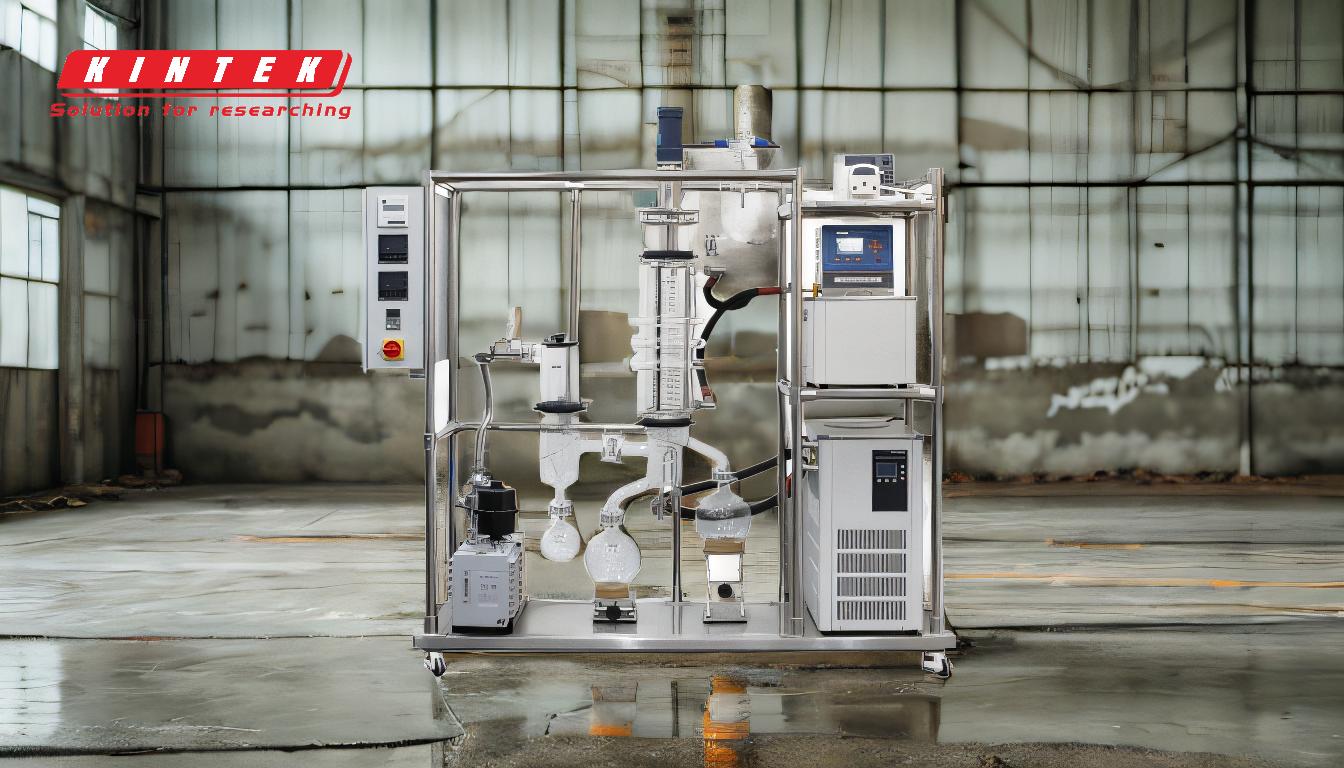Simple distillation is a basic separation technique used when the components of a liquid mixture have significantly different boiling points, typically differing by at least 25°C to 80°C. It is a fast and straightforward method, making it suitable for separating highly volatile solvents from high-boiling materials or purifying liquids with minimal contamination. However, it offers low separation efficiency compared to more advanced distillation methods, limiting its use to specific scenarios where high purity is not required. Common applications include water purification, solvent recovery, and the production of distilled beverages.
Key Points Explained:

-
Definition and Process of Simple Distillation:
- Simple distillation involves heating a liquid mixture to its boiling point, vaporizing the more volatile component, and then condensing the vapor back into a liquid in a separate receiving flask.
- The setup includes a boiling flask, a condenser, and a receiving flask. The process is fast but less efficient for separating components with close boiling points.
-
When to Use Simple Distillation:
- Significant Boiling Point Difference: Simple distillation is most effective when the boiling points of the components differ by at least 25°C to 80°C. This ensures that the more volatile component vaporizes first, allowing for easier separation.
- Separation of Volatile Solvents: It is commonly used to separate highly volatile solvents (e.g., ethanol, acetone) from high-boiling materials (e.g., water, oils). This is useful in solvent recovery or when isolating a specific component from a mixture.
- Purification of Liquids with Minimal Contamination: Simple distillation is suitable for purifying liquids where high purity is not critical, such as in the production of distilled water or alcoholic beverages.
-
Advantages of Simple Distillation:
- Simplicity and Speed: The process is straightforward and requires minimal equipment, making it quick and easy to perform.
- Cost-Effectiveness: It is a low-cost method compared to more complex distillation techniques like fractional or vacuum distillation.
- Suitability for Heat-Stable Compounds: Simple distillation is ideal for compounds that are stable at their boiling points and do not decompose under heat.
-
Limitations of Simple Distillation:
- Low Separation Efficiency: It is not suitable for separating components with close boiling points (less than 25°C difference) or for achieving high-purity separation.
- Unsuitability for Heat-Sensitive Compounds: Compounds that decompose or degrade at high temperatures may not be suitable for simple distillation.
- Limited to Binary Mixtures: Simple distillation works best for binary mixtures (two components) and is less effective for complex mixtures.
-
Applications of Simple Distillation:
- Water Purification: Distilled water is produced by simple distillation, removing impurities and salts. It is used in laboratories, lead-acid batteries, and low-volume humidifiers.
- Solvent Recovery: Simple distillation is used to recover solvents like ethanol or acetone from mixtures, reducing waste and saving costs.
- Production of Alcoholic Beverages: Distillation is a key step in producing spirits like whiskey, vodka, and rum, where ethanol is separated from water and other impurities.
- Separation of Volatile Oils: Essential oils and flavorings are often extracted from herbs and plants using simple distillation.
-
Comparison with Other Distillation Methods:
- Fractional Distillation: Offers higher separation efficiency for mixtures with closer boiling points but requires more complex equipment and longer processing times.
- Vacuum Distillation: Used for heat-sensitive compounds that decompose at high temperatures, as it lowers the boiling point by reducing pressure.
- Short Path Distillation: Ideal for purifying high-value, heat-sensitive substances, such as essential oils or pharmaceuticals, with minimal thermal degradation.
In summary, simple distillation is a practical and efficient method for separating liquids with significantly different boiling points. It is best suited for applications where high purity is not essential, and the process is favored for its simplicity, speed, and cost-effectiveness. However, for more complex separations or heat-sensitive compounds, advanced distillation techniques may be required.
Summary Table:
| Aspect | Details |
|---|---|
| Definition | Heating a liquid mixture to vaporize the more volatile component. |
| Best Use Cases | Boiling point difference ≥ 25°C, solvent recovery, water purification. |
| Advantages | Simple, fast, cost-effective, suitable for heat-stable compounds. |
| Limitations | Low efficiency for close boiling points, unsuitable for heat-sensitive compounds. |
| Applications | Water purification, solvent recovery, alcoholic beverages, essential oils. |
Need help choosing the right distillation method for your needs? Contact our experts today!









